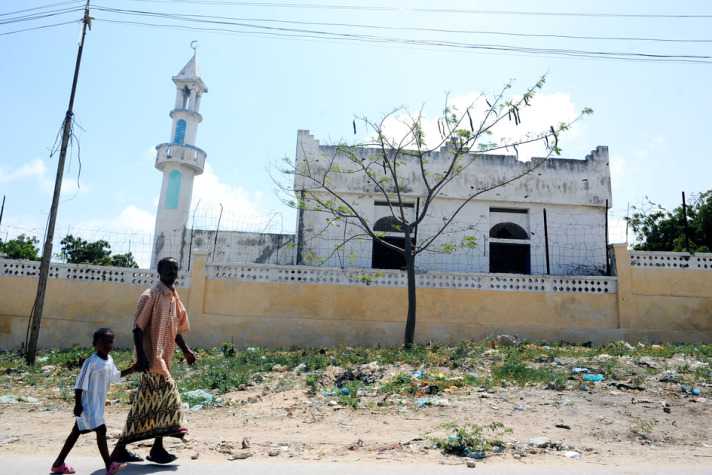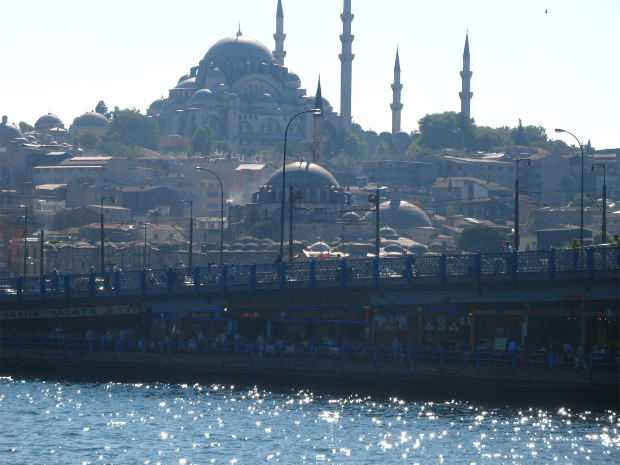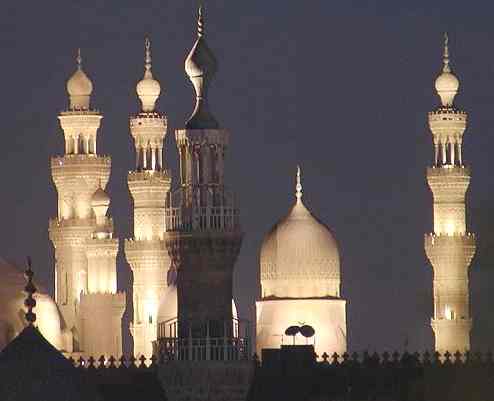Muslims destroy churches or convert them to mosques
by Randy Bright
One of the most recognizable mosques in the world is the Hagia Sophia (also spelled Aya Sofia) in Istanbul, Turkey. It is also known as the Church of Holy Wisdom.
It was built as a church by Justinian the Great of the Byzantine Empire in 537 A.D. over the ruins of two previous churches. It remained the largest church in existence until St. Peter’s Basilica was constructed in Rome nearly a thousand years later. The Hagia Sophia is a very large structure, containing 7,750 square meters of floor space and a dome that soars 56 meters in height.
During the Ottoman conquest in 1453, Mehmet the Conquerer converted it to a mosque. It was at that time that four large minaret towers were added to the structure, giving its now famous appearance. It continued to serve as a mosque until 1934, when it was converted to a museum.
When Constantinople (Istanbul) was conquered in 1453, a 16th century historian said that “churches which were within the city were emptied of their vile idols and cleansed from the filthy and idolatrous impurities and by the defacement of their images and the erection of Islamic prayer niches and pulpits…many monasteries and chapels became the envy of the gardens of paradise.”
Christians are considered inferior in Islam, and have been since its beginning. When they were not killed, they were given a lower status, and severe regulations were placed upon them.
According to Robert Spencer in his book, The Politically Incorrect Guide to Islam and the Crusades, Christians from 634 to 644 B.C., were forced to make a deal with the conquering Muslims. It read, “We made a condition on ourselves that we will neither erect in our areas a monastery, church, or a sanctuary for a monk, nor restore any place of worship that needs restoration nor use any of them for the purpose of enmity against Muslims.”
Under this pact, churches were seized simply by making a false accusation that it was being used against Muslims.
The pact also prohibited them from erecting crosses on their churches or sounding church bells. Current Sharia law forbids the construction of new churches under penalty of death or slavery. And it’s not just churches that Islam won’t tolerate. Here are some examples:
On November 15, 2003, Jihadists bombed synagogues in Istanbul. Prior to the war in Afghanistan, the Taliban destroyed the landmark Buddhas of Bamiyan with dynamite.
The first mosque built in India was constructed over the ruins of a Hindu temple that was destroyed by the Muslims.
According to an article on the Jihad Watch website, “Hindu scholars have compiled a two-volume work, its pages filled merely with a laconic list of the thousands of Hindu temples, and vast temple complexes, with their artwork as well, destroyed by the Muslims, their carved stones quarried for the erection of mosques. All over the Christian world, too, tens of thousands of churches and Christian libraries and other structures were destroyed, or were turned into mosques if the structure was famous enough.”
The Hagia Sophia was one that was not destroyed, but hundreds of churches in Constantinople were.
And from 1948 to 1967, Jordan held the Old City of Jerusalem. During that time, all synagogues were destroyed. More recently, an Orthodox church in Kosovo was according to a report, turned into a public toilet and waste dump, and in Pakistan, 70 jihadists were set free from the court that was trying them for burning alive eight Christians and burning four churches. It was reported that witnesses had been threatened and had not appeared to testify against the Jihadists.
In England, over a thousand churches have already been converted to mosques, and if England becomes an Muslim country in the next decade as experts anticipate, what will happen to its remaining churches and cathedrals?
Europe itself is not far behind England in becoming Muslim, as Muslims are immigrating to its countries at a rapid rate. What will happen to its ancient cathedrals when that happens?
As more and more mosques are built in this country, we need to be keenly aware not only of their symbolic significance, but what has historically happened in countries where Islam became the dominant religion. The mosque is a symbol of the coming domination – if we allow it – of a belief system that is totally intolerant and incompatible with the American way of life.
Randy W. Bright, AIA, NCARB, is an architect who specializes in church and church-related projects. You may contact him at 918-664-7957, [email protected] or www.churcharchitect.net.
©2006 Randy W. Bright
Previous articles written by the author are available for reading at his website.
via Muslims destroy churches or convert them to mosques | Tulsa Beacon.







